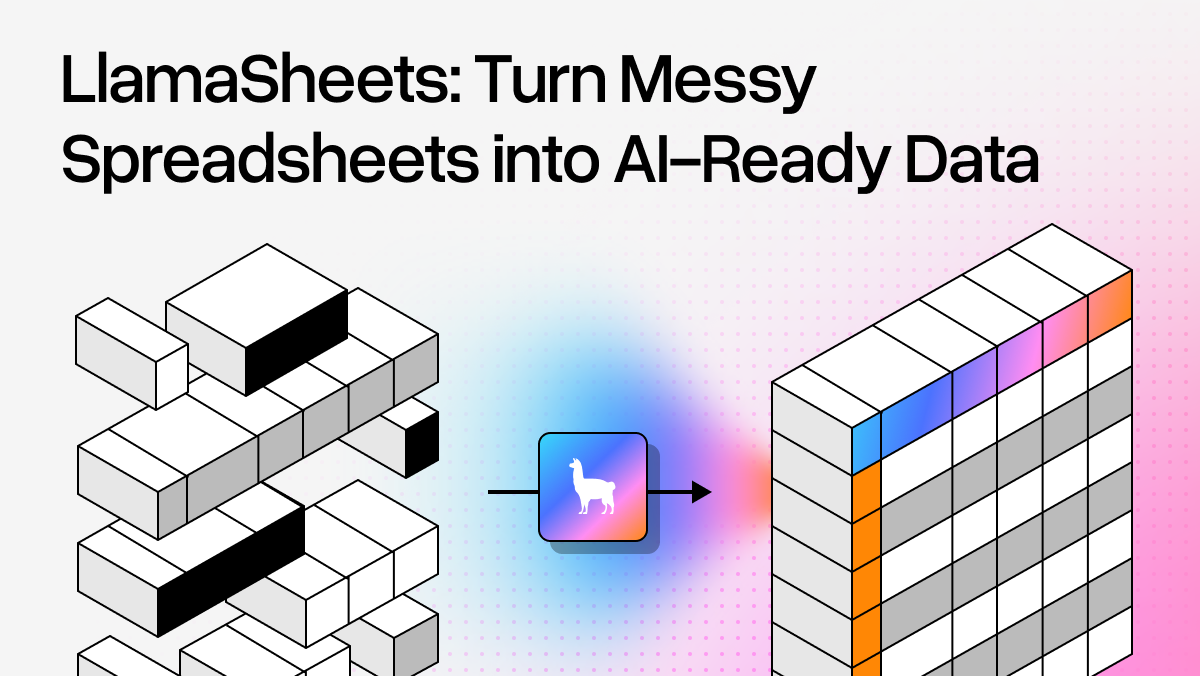In Retrieval-Augmented Generation (RAG) systems, the choice of chunk size can significantly impact retrieval accuracy and overall system performance. However, experimenting with different chunk sizes has traditionally been a time-consuming process. This post explores the challenges associated with chunk size optimization and introduces LlamaCloud's features that facilitate this process.
Challenges in Chunk Size Experimentation
A lot of developers have figured out ways to experiment with retrieval parameters and prompts in a RAG pipeline - adjusting top-k and the QA prompts are relatively straightforward endeavors and of-course have an impact on performance.
Experimenting with parameters during the indexing stage, such as chunking is equally as important, but harder to do. Indexing experimentation presents several technical challenges:
- Reindexing Overhead: Changing chunk sizes typically necessitates reindexing the entire dataset, which can be computationally expensive and time-consuming, especially for large datasets.
- Storage Inefficiency: Maintaining multiple versions of indexed data with different chunk sizes can lead to significant storage overhead.
- Limited Visibility: Without proper tooling, it's difficult to visualize how documents are being chunked and how this affects retrieval quality.
These factors make it annoying to experiment with chunking, especially in an ad-hoc pipeline setup in a Jupyter notebook. Most experimentation and observability tools primarily focus on query-time traces and not on data observability. As a result we’ve noticed a certain reluctance from developers to experiment with chunking despite the impact on final performance.
LlamaCloud's Approach to Chunk Size Optimization
LlamaCloud is an enterprise-ready platform that lets developers easily setup and iterate on RAG pipelines over unstructured data. It provides a set of features designed to streamline the process of chunk size experimentation:
- Index Cloning: Enables quick creation of index copies with different chunking configurations.
- Chunk Visualization: Allows direct inspection of how documents are chunked and how it impacts retrieval.
- Efficient Iteration: Facilitates testing different chunk sizes without the need for manual data store management or complex reindexing processes.
The following sections outline a workflow for utilizing these features to optimize chunk sizes in a RAG pipeline.
Workflow: Optimizing Chunk Sizes with LlamaCloud
Below we detail an example use case where we’re able to make use of LlamaCloud’s setup and experimentation features to find a chunking configuration that better answers a question in an ad-hoc fashion. This is reflective of user behaviors where the user wants to sanity-check their RAG pipeline on some questions that they know the full-answer to, before running more systematic evaluation.
Initial RAG Pipeline Setup
First, create an initial index in LlamaCloud. Create a new LlamaCloud Index via the UI and upload your document set (e.g., three ICLR 2024 research papers). In the "Transform Settings", select "Auto" and set a chunk size of 512 tokens as a baseline.
Define “Golden” Question-Answer Pair
Find an example question that you want to test over this data. In this example, the question we want to try asking is: "Describe the core features of SWE-bench".
You should have the golden context in mind. Here the answer is directly found in Section 2.3 of the SWE-bench paper which directly describes the Features of SWE-bench.

Baseline Configuration Testing through Playground
You can now use LlamaCloud playground to evaluate the initial setup. Navigate to the "Playground" section of your index page and click on the “Chat” tab. This gives you a full chat UI over your index with intermediate step + response streaming and citations.
Enter the question above. You’ll get back a response that seems reasonable at first glance! The response describes SWE-Bench as being representative of real-world software engineering tasks, being continuously updatable, and more.

But you’ll notice that the last two sections are missing - “cross-context code editing” and “wide scope for possible solutions”.
3. Chunk Inspection
Since the answer is partially correct, we might hypothesize that the chunking is causing the relevant context to be broken up. Access the retrieval UI to view retrieved chunks and their sources. Use the "View in File" feature to examine how the source document is parsed and chunked. You may observe that relevant information is split across multiple chunks, potentially affecting retrieval quality.

4. Chunk Size Iteration
To test an alternative chunking strategy, use the "Copy" button on the Index page to duplicate your index. In the new index, select "Edit" to modify chunking parameters. Switch to "Manual" mode, set "Segmentation Configuration" to "Page", and set "Chunking Configuration" mode to "None". Apply these changes to initiate a new indexing run with updated settings.

5. Result Comparison
Execute the same query on the new index and compare the results. You should observe a more comprehensive response that better captures the full context of SWE-bench's features.
Next Steps
- If you haven’t done so already, signup for a LlamaCloud account: https://cloud.llamaindex.ai/. We’re actively letting people off the waitlist!
- Check out the full notebook.
While the ad-hoc experimentation process described in this post provides a quick way to iterate on chunk sizes, it's important to recognize that this is just the beginning of optimizing your RAG pipeline. Here are some suggested next steps to further refine your system:
1. Systematic Evaluation: Develop a more structured evaluation framework. This could involve creating a test set of queries with known correct answers, and systematically comparing the performance of different chunk sizes across various metrics such as relevance, coherence, and factual accuracy. We have a fantastic set of observability and evaluation partners to help you get started, including LlamaTrace (by Arize), Traceloop, and Langfuse.
2. Automated Testing: Implement automated tests that can run through your evaluation framework each time you make changes to your chunking strategy. This can help you quickly identify if new configurations are improving or degrading performance.
3. Fine-tuning Retrieval Parameters: Once you've found a chunking strategy that works well, experiment with other retrieval parameters such as the number of retrieved chunks, reranking strategies, or hybrid search methods.
4. Domain-Specific Optimization: Consider how the nature of your specific documents and use case might influence optimal chunk sizes. Technical documentation, narrative text, and structured data might all benefit from different chunking strategies.
5. Monitoring and Continuous Improvement: Set up monitoring for your production RAG system to track key performance indicators over time. Use this data to inform ongoing optimization efforts.
By combining the rapid iteration capabilities of LlamaCloud with these more systematic approaches, you can create a robust, high-performing RAG pipeline tailored to your specific needs.
If you’re interested in chatting about our LlamaCloud plans to solve your enterprise RAG needs, get in touch.





